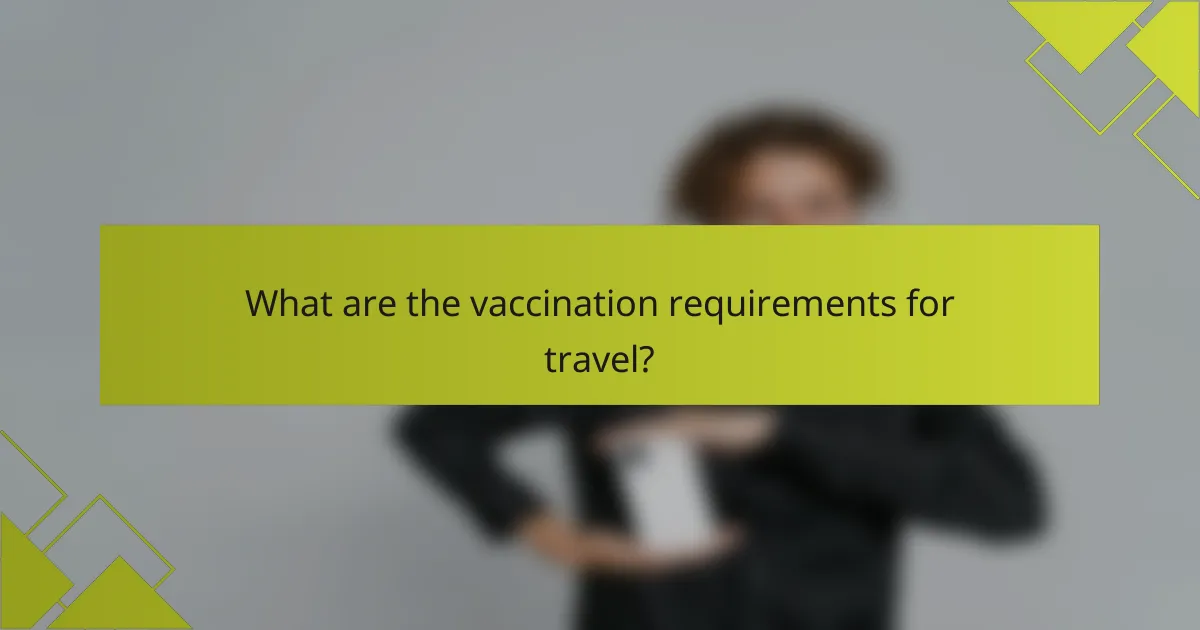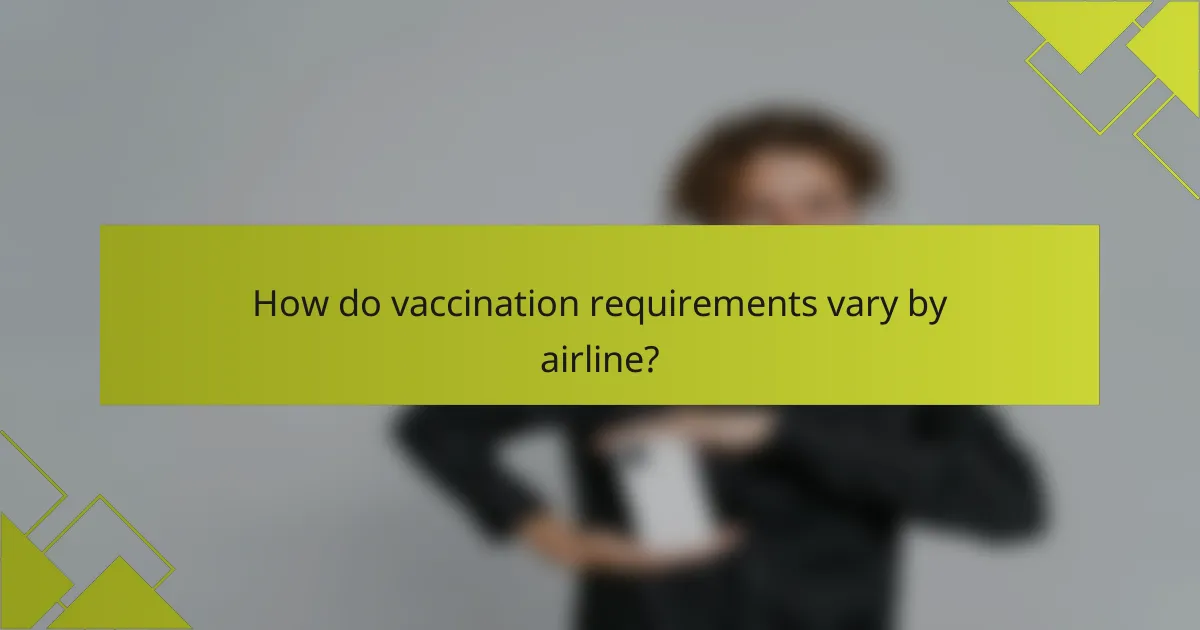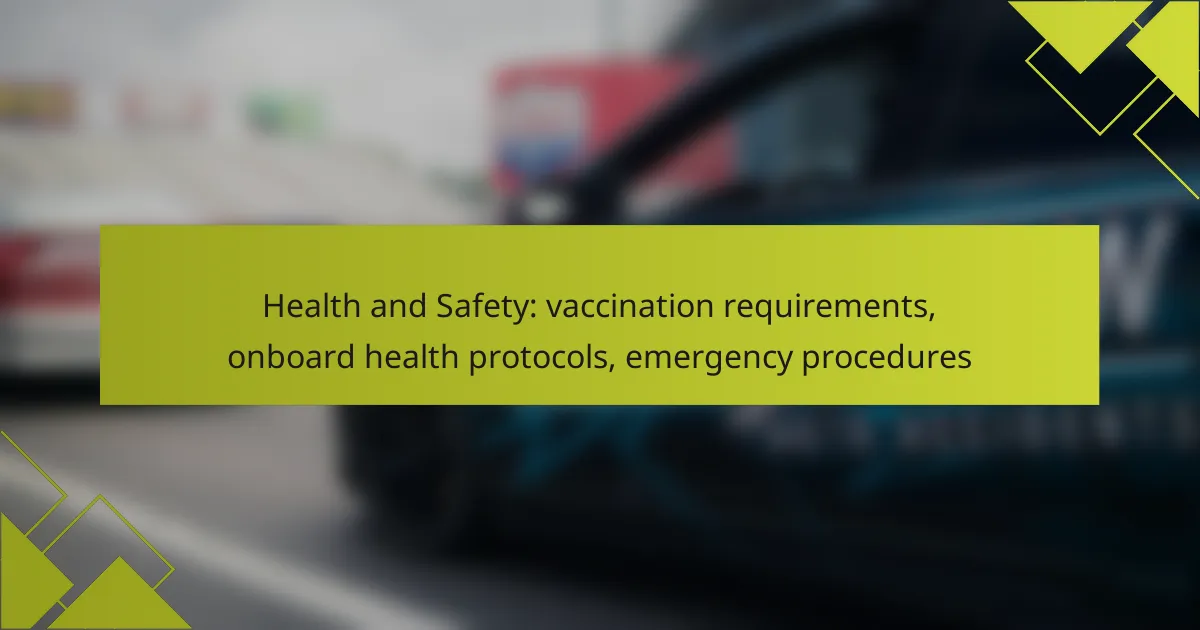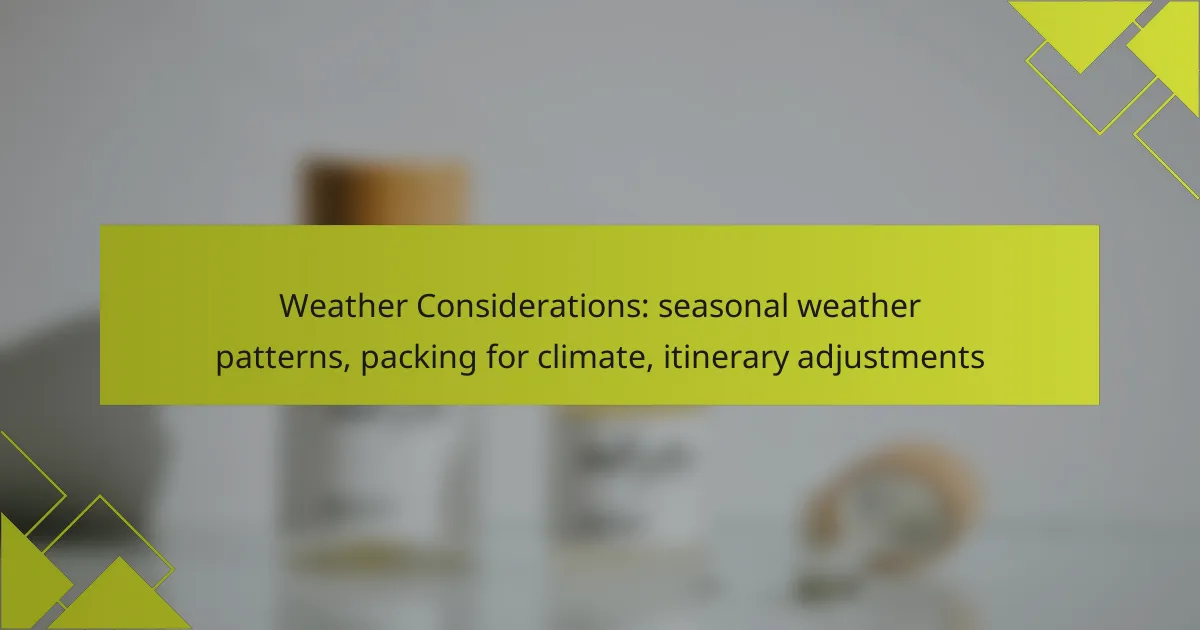Understanding health and safety protocols is essential for a safe travel experience. Vaccination requirements can vary by destination, necessitating travelers to verify specific mandates ahead of time. Onboard health measures, including mask-wearing and sanitization, aim to protect everyone, while emergency procedures ensure prompt and effective responses to any crises that may arise during the journey.

What are the vaccination requirements for travel?
Vaccination requirements for travel vary by destination and can include mandates for COVID-19 as well as routine vaccinations. Travelers should check the specific regulations of their destination well in advance to ensure compliance.
COVID-19 vaccination mandates
Many countries have implemented COVID-19 vaccination mandates for travelers, requiring proof of vaccination to enter. These mandates often specify that travelers must be fully vaccinated with an approved vaccine, which may include a booster dose depending on the destination.
It is essential to verify the specific vaccine types accepted by each country, as some may only recognize certain brands. Additionally, some regions may have different rules for vaccinated versus unvaccinated travelers, impacting entry procedures and quarantine requirements.
Routine vaccinations for specific destinations
In addition to COVID-19 vaccines, some destinations require routine vaccinations such as those for hepatitis A, typhoid, or yellow fever. These requirements are often based on the health risks associated with the region and can change based on outbreaks or public health advisories.
Travelers should consult with healthcare providers or travel clinics to determine which vaccinations are recommended or required for their specific itinerary. It is advisable to complete these vaccinations several weeks before travel to ensure adequate immunity.
Documentation needed for entry
Travelers must present valid documentation of their vaccinations upon entry to many countries. This typically includes a vaccination certificate that shows the type of vaccine received, the dates of administration, and the issuing authority.
Some countries may require digital proof of vaccination, while others accept paper documents. It is crucial to ensure that the documentation meets the destination’s specific requirements to avoid entry denial.
Exemptions and exceptions
Exemptions from vaccination requirements may be available for certain individuals, such as those with medical conditions that contraindicate vaccination. However, these exemptions often require supporting documentation from a healthcare provider.
Some countries may also have exceptions for travelers who can provide proof of recent recovery from COVID-19 or those under a certain age. It is important to check the latest regulations and prepare any necessary documentation ahead of time to facilitate smooth entry.

What health protocols are implemented onboard?
Health protocols onboard are designed to ensure the safety and well-being of all passengers and crew members. These measures include mask-wearing policies, social distancing measures, sanitization procedures, and health screenings before boarding.
Mask-wearing policies
Mask-wearing policies require passengers to wear face coverings in designated areas, especially when social distancing is not possible. Masks should cover both the nose and mouth, and specific types may be mandated, such as surgical masks or N95 respirators, depending on local regulations.
Passengers are encouraged to bring their own masks, but some operators may provide them if needed. Compliance with these policies is monitored by crew members, and non-compliance may result in denial of boarding or removal from the vessel.
Social distancing measures
Social distancing measures aim to minimize close contact between passengers. This includes rearranging seating arrangements in common areas and limiting the number of people allowed in elevators and restrooms at any given time.
To facilitate social distancing, signage is often placed throughout the vessel to remind passengers to maintain a safe distance. It is advisable to follow these guidelines to help reduce the risk of transmission.
Sanitization procedures
Sanitization procedures involve regular cleaning and disinfection of high-touch surfaces, such as handrails, door handles, and dining areas. These procedures are typically conducted multiple times a day using approved disinfectants that meet health standards.
Hand sanitizing stations are also strategically located throughout the vessel, encouraging passengers to clean their hands frequently. Passengers should take advantage of these stations, especially before meals and after using shared facilities.
Health screenings before boarding
Health screenings before boarding may include temperature checks and health questionnaires to identify any symptoms of illness. Passengers may be asked about recent travel history and potential exposure to infectious diseases.
Those exhibiting symptoms or failing to meet health criteria may be denied boarding. It is essential for passengers to arrive early to allow time for these screenings, which help protect everyone onboard.

What emergency procedures are in place during travel?
Emergency procedures during travel are designed to ensure passenger safety and effective response to crises. These procedures include medical assistance protocols, evacuation plans, and communication channels specifically tailored for emergencies.
Medical assistance protocols
Medical assistance protocols outline the steps to take when a passenger requires urgent healthcare. Trained personnel are typically available onboard to assess and manage medical situations, often equipped with basic medical supplies.
In case of severe emergencies, the crew may coordinate with ground medical services for immediate support upon landing. Passengers are advised to inform the crew of any pre-existing medical conditions before travel to facilitate quicker responses if needed.
Evacuation plans
Evacuation plans detail the procedures for safely exiting the vehicle in emergencies. These plans include designated exits, assembly points, and instructions for passengers to follow during an evacuation.
Regular drills are conducted to ensure crew members are familiar with the evacuation process, which can significantly reduce evacuation time. Passengers should familiarize themselves with the safety instructions provided at the start of their journey.
Communication channels for emergencies
Effective communication channels are crucial during emergencies to relay important information to passengers. Crew members typically use public address systems to provide real-time updates and instructions.
In addition, some travel services may offer mobile apps or SMS alerts to keep passengers informed about emergency situations. It’s advisable for travelers to stay attentive to announcements and follow crew instructions promptly.

How do vaccination requirements vary by airline?
Vaccination requirements differ significantly among airlines, influenced by destination regulations, company policies, and public health guidelines. Travelers should check specific airline mandates before booking to ensure compliance and avoid disruptions.
Airline-specific vaccination policies
Each airline sets its own vaccination policies based on factors like routes and government regulations. For instance, some airlines may require proof of vaccination for international flights, while others might only recommend it. Always verify the latest requirements directly on the airline’s official website.
Additionally, certain airlines may have different policies for domestic versus international travel, reflecting varying health protocols across countries. This can lead to confusion, so it’s crucial to stay informed about the specific airline’s stance.
Differences in enforcement
Enforcement of vaccination requirements can vary widely between airlines. Some may strictly check vaccination status at check-in or boarding, while others might rely on self-reporting. This inconsistency can affect travelers’ experiences, making it essential to understand each airline’s approach.
Moreover, airlines operating in regions with stringent health regulations may enforce rules more rigorously than those in areas with relaxed guidelines. Passengers should prepare for potential scrutiny, especially when traveling to or from countries with strict entry requirements.
Impact on travel insurance
Vaccination requirements can significantly influence travel insurance coverage. Many policies may not cover cancellations or disruptions if travelers do not meet the vaccination criteria set by airlines or destinations. It’s advisable to read the fine print of insurance policies to understand these conditions.
Some insurers may offer specific plans that cater to vaccinated travelers, potentially providing broader coverage. Always compare options and consider purchasing insurance that aligns with your vaccination status and travel plans to avoid unexpected losses.

What are the implications of health protocols on travel experience?
Health protocols significantly impact the travel experience by introducing measures that enhance safety but may also alter convenience and comfort. These protocols include vaccination requirements, onboard health guidelines, and emergency procedures that travelers must navigate.
Effects on boarding times
Health protocols can lead to longer boarding times due to additional checks and procedures. For instance, verifying vaccination status or conducting health screenings may add several minutes to the boarding process.
Travelers should arrive earlier than usual to accommodate these potential delays. Expect boarding to take anywhere from a few extra minutes to potentially longer during peak travel periods.
Passenger comfort and compliance
Passenger comfort can be affected by health protocols, as some travelers may feel anxious about health checks or wearing masks. Compliance with these protocols is essential for maintaining safety but can lead to discomfort for some individuals.
Airlines often provide clear communication about health requirements, which can help ease concerns. Passengers should be prepared for possible changes in cabin environment, such as increased ventilation or reduced service interactions.
Changes in service offerings
Health protocols have led to changes in service offerings, such as reduced in-flight meal options or limited access to certain amenities. Airlines may adjust their services to minimize contact and enhance hygiene.
Travelers should check with their airline for specific service changes prior to departure. Being aware of these adjustments can help set expectations and improve overall travel experience.

What are the latest trends in travel health and safety?
Recent trends in travel health and safety focus on vaccination requirements, onboard health protocols, and emergency procedures. Travelers are increasingly expected to meet specific health standards to ensure their safety and that of others during their journeys.
Vaccination requirements
Vaccination requirements for travelers vary significantly depending on the destination and current health regulations. Many countries now mandate proof of vaccination against diseases such as COVID-19, measles, and yellow fever before entry.
Travelers should check the specific vaccination requirements for their destination well in advance. Some countries may accept digital vaccination certificates, while others may require physical documentation. It’s advisable to carry both forms to avoid complications.
Onboard health protocols
Onboard health protocols have evolved to enhance passenger safety during travel. Airlines are implementing measures such as enhanced cleaning, air filtration systems, and social distancing to minimize the risk of disease transmission.
Travelers should familiarize themselves with the specific health protocols of their airline, which may include mask mandates and health screenings. Compliance with these protocols is essential for a smooth travel experience.
Emergency procedures
Emergency procedures during travel are critical for ensuring passenger safety. Airlines and travel companies are required to have clear protocols in place for medical emergencies, including access to first aid and emergency medical services.
Travelers should be aware of the emergency procedures specific to their airline or travel provider. Knowing how to access help and what to do in case of an emergency can significantly impact safety and response times.



